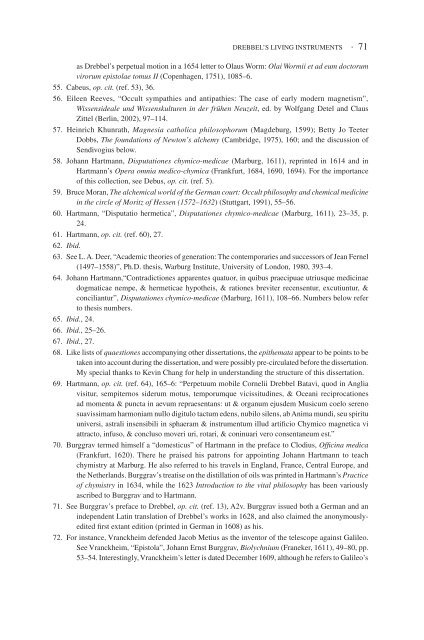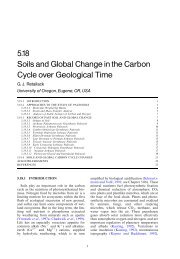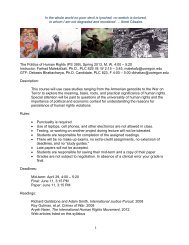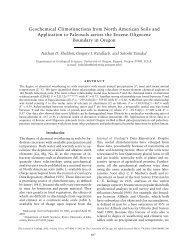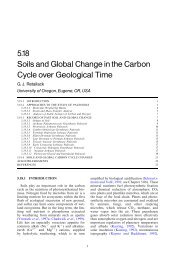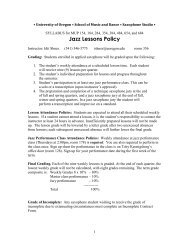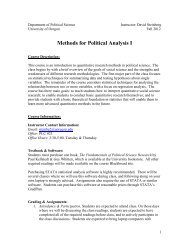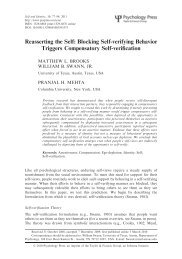drebbel's living instruments, hartmann's microcosm, and libavius's ...
drebbel's living instruments, hartmann's microcosm, and libavius's ...
drebbel's living instruments, hartmann's microcosm, and libavius's ...
You also want an ePaper? Increase the reach of your titles
YUMPU automatically turns print PDFs into web optimized ePapers that Google loves.
DREBBEL’S LIVING INSTRUMENTS · 71as Drebbel’s perpetual motion in a 1654 letter to Olaus Worm: Olai Wormii et ad eum doctorumvirorum epistolae tomus II (Copenhagen, 1751), 1085–6.55. Cabeus, op. cit. (ref. 53), 36.56. Eileen Reeves, “Occult sympathies <strong>and</strong> antipathies: The case of early modern magnetism”,Wissensideale und Wissenskulturen in der frühen Neuzeit, ed. by Wolfgang Detel <strong>and</strong> ClausZittel (Berlin, 2002), 97–114.57. Heinrich Khunrath, Magnesia catholica philosophorum (Magdeburg, 1599); Betty Jo TeeterDobbs, The foundations of Newton’s alchemy (Cambridge, 1975), 160; <strong>and</strong> the discussion ofSendivogius below.58. Johann Hartmann, Disputationes chymico-medicae (Marburg, 1611), reprinted in 1614 <strong>and</strong> inHartmann’s Opera omnia medico-chymica (Frankfurt, 1684, 1690, 1694). For the importanceof this collection, see Debus, op. cit. (ref. 5).59. Bruce Moran, The alchemical world of the German court: Occult philosophy <strong>and</strong> chemical medicinein the circle of Moritz of Hessen (1572–1632) (Stuttgart, 1991), 55–56.60. Hartmann, “Disputatio hermetica”, Disputationes chymico-medicae (Marburg, 1611), 23–35, p.24.61. Hartmann, op. cit. (ref. 60), 27.62. Ibid.63. See L. A. Deer, “Academic theories of generation: The contemporaries <strong>and</strong> successors of Jean Fernel(1497–1558)”, Ph.D. thesis, Warburg Institute, University of London, 1980, 393–4.64. Johann Hartmann,“Contradictiones apparentes quatuor, in quibus praecipuae utriusque medicinaedogmaticae nempe, & hermeticae hypotheis, & rationes breviter recensentur, excutiuntur, &conciliantur”, Disputationes chymico-medicae (Marburg, 1611), 108–66. Numbers below referto thesis numbers.65. Ibid., 24.66. Ibid., 25–26.67. Ibid., 27.68. Like lists of quaestiones accompanying other dissertations, the epithemata appear to be points to betaken into account during the dissertation, <strong>and</strong> were possibly pre-circulated before the dissertation.My special thanks to Kevin Chang for help in underst<strong>and</strong>ing the structure of this dissertation.69. Hartmann, op. cit. (ref. 64), 165–6: “Perpetuum mobile Cornelii Drebbel Batavi, quod in Angliavisitur, sempiternos siderum motus, temporumque vicissitudines, & Oceani reciprocationesad momenta & puncta in aevum repraesentans: ut & organum ejusdem Musicum coelo serenosuavissimam harmoniam nullo digitulo tactum edens, nubilo silens, ab Anima mundi, seu spirituuniversi, astrali insensibili in sphaeram & instrumentum illud artificio Chymico magnetica viattracto, infuso, & concluso moveri uri, rotari, & coninuari vero consentaneum est.”70. Burggrav termed himself a “domesticus” of Hartmann in the preface to Clodius, Officina medica(Frankfurt, 1620). There he praised his patrons for appointing Johann Hartmann to teachchymistry at Marburg. He also referred to his travels in Engl<strong>and</strong>, France, Central Europe, <strong>and</strong>the Netherl<strong>and</strong>s. Burggrav’s treatise on the distillation of oils was printed in Hartmann’s Practiceof chymistry in 1634, while the 1623 Introduction to the vital philosophy has been variouslyascribed to Burggrav <strong>and</strong> to Hartmann.71. See Burggrav’s preface to Drebbel, op. cit. (ref. 13), A2v. Burggrav issued both a German <strong>and</strong> anindependent Latin translation of Drebbel’s works in 1628, <strong>and</strong> also claimed the anonymouslyeditedfirst extant edition (printed in German in 1608) as his.72. For instance, Vranckheim defended Jacob Metius as the inventor of the telescope against Galileo.See Vranckheim, “Epistola”, Johann Ernst Burggrav, Biolychnium (Franeker, 1611), 49–80, pp.53–54. Interestingly, Vranckheim’s letter is dated December 1609, although he refers to Galileo’s


